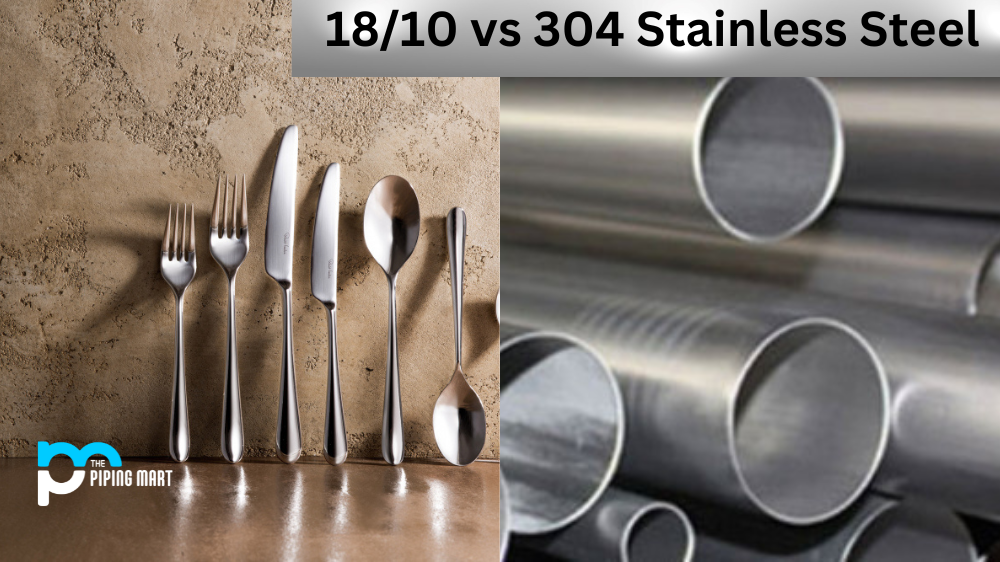Regarding stainless steel, there are over 150 grades available, but not all are created equal. Today, we’re going to focus on two popular grades of stainless steel,304 and 309. We’ll find out what they’re made of, where they differ, and which is suitable for your next project. Let’s dive in!
What is Stainless Steel 304?
Stainless steel 304 is the most common type of stainless steel, and it’s used in various applications. It’s often used in kitchen equipment, food processing equipment, and architectural panelling. 304 stainless steel is also found in automotive parts and exhaust systems.
The chemical composition of stainless steel 304 includes 18-20% chromium and 8-10% nickel, which gives the material excellent corrosion resistance and high strength and durability. This grade of stainless steel can withstand temperatures up to 1900°F (1038°C).
What is Stainless Steel 309?
Like 304 stainless steel, grade 309 also has a high concentration of chromium and nickel but additionally contains about 22% chromium and 12% nickel. The increased chromium content in 309 provides better oxidation resistance than 304. This grade of stainless steel can withstand temperatures up to 2100°F (1149°C).
Difference Between 304 and 309 Stainless Steel
When deciding between 304 vs 309 stainless steel, the main difference is their use in higher-temperature applications. Grade 309 is often used for boiler maker jobs or dissimilar welding metals because it can withstand high heat without suffering from sensitization. This phenomenon can occur when using other austenitic grades, such as 304. If you need something that will perform well at high temperatures, then choosing grade 309 might be the right option. However, if you don’t need the added heat resistance, then opting for grade 304 might make more sense from a cost perspective since it’s cheaper than grade 309.
Chemical Composition
Chemical composition is one of the most important differences between 304 and 309 stainless steel. 304 stainless steel contains 18% chromium and 8% nickel, while 309 stainless steel contains 22% chromium and 12% nickel. The higher levels of chromium and nickel in 309 stainless steel make it more resistant to corrosion than 304 stainless steel.
Temperature Resistance
Another key difference between 304 and 309 stainless steel is the temperature resistance. 304 stainless steel can withstand temperatures up to 1650 degrees Fahrenheit, while 309 stainless steel can withstand temperatures up to 2150 degrees Fahrenheit. This makes 309 stainless steel ideal for boiler tubes and exhaust systems where high temperatures are a concern.
Weldability
Another significant difference between 304 and 309 stainless steel is weldability. 304 stainless steel can be welded using all standard welding methods, while 309 stainless steel is not recommended for welding due to its high carbon content.
Corrosion Resistance
One of the essential benefits of 309 stainless steel is its superior corrosion resistance compared to 304 stainless steel. The higher levels of chromium and nickel make 309 stainless steel more resistant to corrosion from exposure to water, chemicals, and other corrosive materials.
Strength and Durability
309 stainless steel also has better strength and durability than 304 stainless steel. The higher levels of chromium and nickel give it better resistance to wear and tear, making it ideal for applications where high-stress levels are a concern.
Conclusion:
In conclusion, the main difference between 304 vs 309 lies in their use in higher-temperature applications. Grade 309 is best suited for jobs requiring high heat exposure, while grade 304 is a more economical choice since it’s cheaper than its counterpart. Consider your project needs so you can choose the right type of stainless steel!
Sakshee is a talented blogger, with a particular focus on the Business and Metal Industry. She is passionate about sharing her insights on various metal products and helping professionals to make a better decisions.




